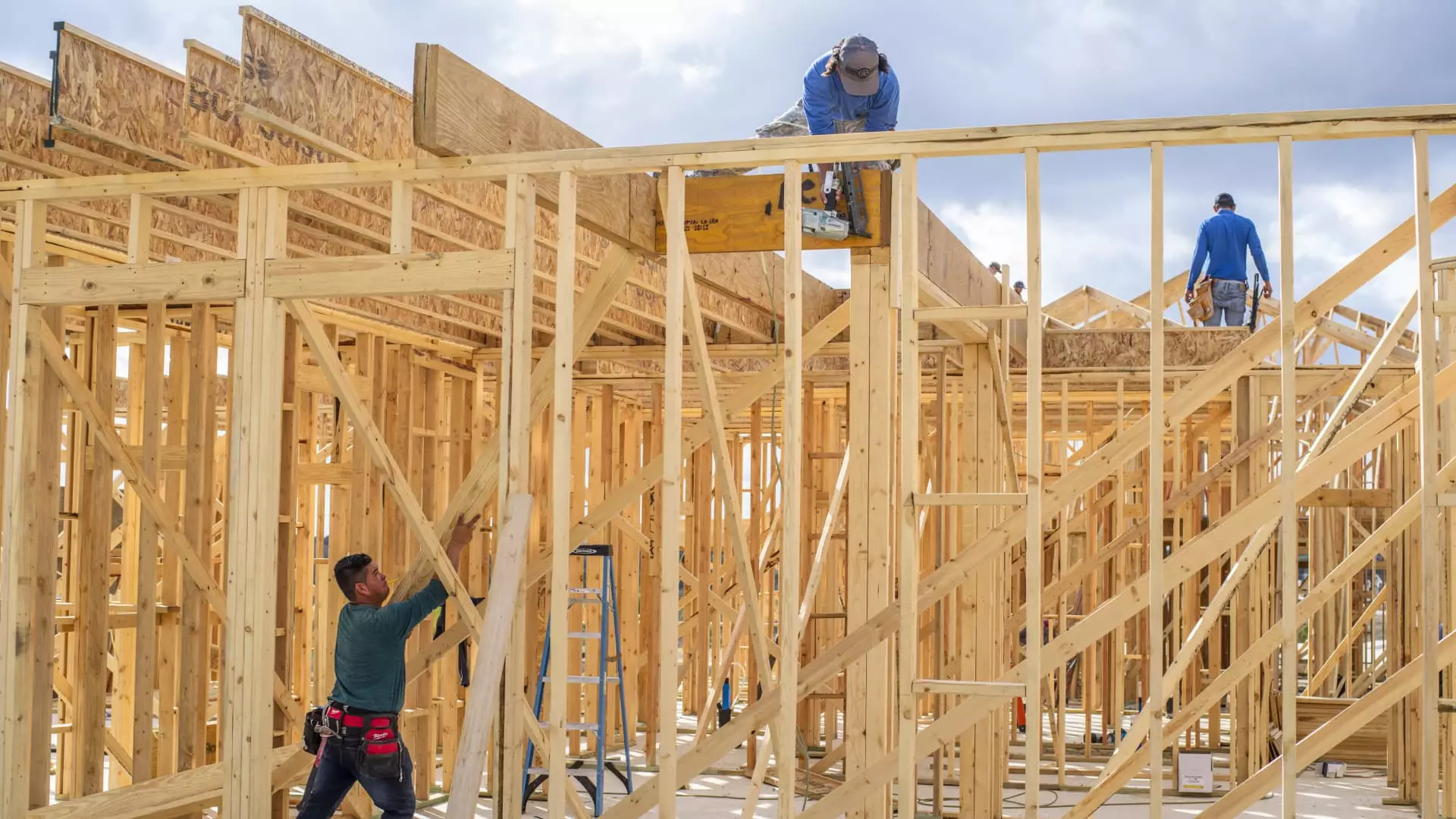The sentiment among homebuilders in the United States has taken a notable downturn, marking the lowest levels seen in recent months. As concerns about economic policies, particularly the implications of tariffs, escalate, the National Association of Home Builders’ (NAHB) Housing Market Index (HMI) plummeted by five points, settling at a disheartening score of 42. This index, which serves as a barometer for builder confidence, has now crossed into a negative sentiment, highlighting a precarious landscape for the housing market.
Understanding the Declines in Builder Confidence
The shift in sentiment among builders can be attributed to various economic pressures. Not only did the HMI register a fall, but it also reflected concerning trends across all three of its key components. Current sales conditions experienced a 4-point decline, bringing the index to 46, while buyer traffic dropped to a mere 29—indicative of a shrinking market interest. The most alarming statistic was the steep 13-point fall in sales expectations for the upcoming six months, signaling a potential slowdown as builders brace for further economic challenges ahead.
According to Carl Harris, the NAHB Chairman and a homebuilder from Wichita, Kansas, there is a glimmer of hope for pro-development policies. However, he emphasizes that uncertainty surrounding regulations and increasing costs has dampened expectations for the housing market in 2025. The sentiment shift comes at a critical time, as the spring selling season approaches, traditionally a period of increased activity in the housing market.
One of the most pressing issues facing builders is the impact of elevated mortgage rates. The average rate on a 30-year fixed mortgage has surged beyond the 7% mark, following a period where it hovered around 6%. This rise in borrowing costs, coupled with already increased home prices compared to the previous year, has made home purchases less affordable for many potential buyers. Such affordability challenges not only deter prospective homebuyers but also contribute to the downward trend in homebuilder sentiment.
Mindful of the economic ramifications, Robert Dietz, NAHB’s chief economist, pointed out that the anticipated tariffs are a significant concern. With a substantial portion of essential materials—32% of appliances and 30% of softwood lumber—sourced from international trade, the looming threat of tariffs adds unpredictability to building costs. This financial strain is likely to translate into higher home prices, further exacerbating the affordability issue.
Amidst these pressures, the landscape for single-family housing is revealing signs of stagnation. Builders have been reflecting on diminished buyer demand in recent earnings reports, which indicates a ripple effect from the rising costs associated with both borrowing and purchasing homes. The share of builders engaging in price reductions has slightly decreased from 30% in January to 26% in February, marking the lowest percentage since May 2024. This could suggest that builders are becoming cautious about pricing strategies, aware of the limits of buyer interest.
Furthermore, the effectiveness of sales incentives appears to be waning. With fewer buyers able to engage in the market due to high prices, the appeal of financial incentives diminishes considerably. As Ryan Marshall, CEO of PulteGroup, noted, the inability of incentives to attract a decent pool of prospective buyers is a troubling trend. When buyers are fundamentally priced out of the market, no level of incentive can regenerate interest.
The current climate for homebuilders is daunting, shaped by regulatory concerns, high borrowing costs, and an observable decline in buyer activity. As these factors intertwine, builders may need to rethink their strategies in marketing and pricing to navigate through this challenging period. The shift in consumer sentiment towards homebuying must also be a focal point for builders, compelling them to adapt to a potentially cooler market.
While there is a desire for more favorable policies and reduced costs, the current state of homebuilder sentiment reflects deeper systemic issues in the housing market. If these trends continue, the repercussions could be significant, not just for builders but for the broader economy, as decreased home construction further strains housing supply and affordability. It is clear that a collaborative response that addresses these multifaceted challenges will be crucial for revitalizing confidence in the housing sector.

